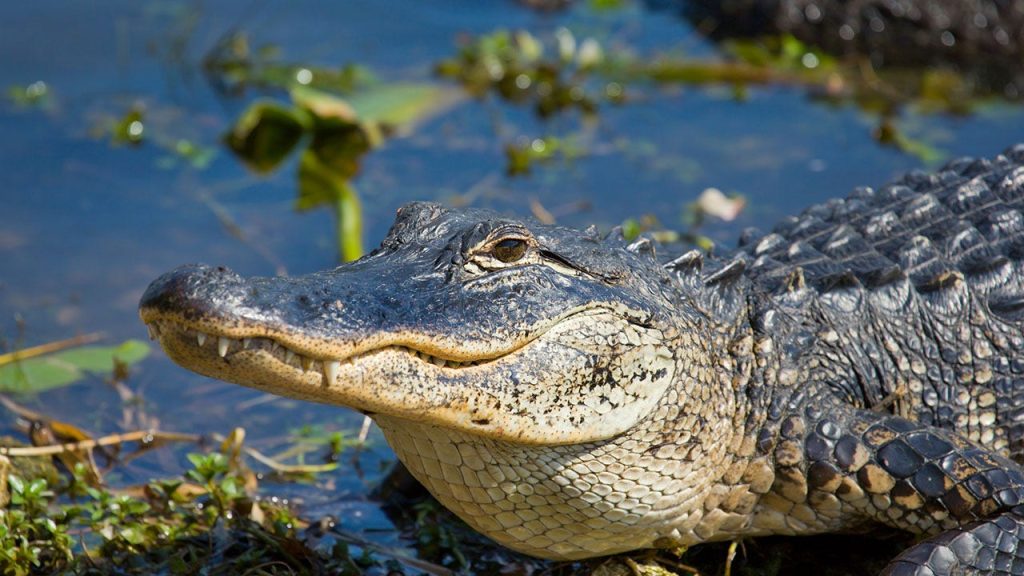A man named Casey Yarbrough was playing a round of golf in Naples, Florida when he heard a loud noise that sounded like a gun going off. When he approached the next hole, he discovered a 14-foot-long alligator with a large turtle trapped in its jaws. Yarbrough estimated that the turtle weighed around 50 pounds, and he could hear the alligator cracking through the turtle’s shell with its jaws. This was a shocking sight for Yarbrough, who has been playing golf for almost 50 years and had never seen anything like it before.
While the idea of an alligator dining on a turtle might seem disturbing, it is actually a common occurrence in the animal kingdom. Alligators are known to be opportunistic feeders and will consume a variety of prey, including turtles, snakes, small mammals, birds, fish, and sometimes even smaller alligators. In fact, a recent incident in Florida saw a large alligator devouring a smaller version of itself, leaving witnesses feeling creeped out but ultimately unharmed. The Florida Fish and Wildlife Conservation Commission (FWC) advises people to never handle an alligator, as their bites can result in serious infection and it is also illegal to do so.
For anyone who encounters a nuisance alligator, the FWC recommends calling their Nuisance Alligator Hotline at 866-392-4286. Alligators that are less than 4 feet in length are generally not considered a danger to people or pets unless they are handled. The FWC offers a variety of safety resources on their website to help people stay safe in the presence of these reptiles. It is important to remember that alligators are wild animals and should be treated with caution and respect to avoid potentially dangerous situations.
While encountering an alligator making a meal out of a turtle may be unsettling, it is a natural behavior for these large reptiles. Turtles are a common prey for alligators, and they are an important part of the ecosystem in Florida and other regions where these animals live. By respecting the boundaries of wildlife and following safety guidelines set by organizations like the FWC, people can coexist safely with alligators and other creatures in their natural habitats. It is essential to remember that these animals play a vital role in the environment and should be protected and appreciated from a safe distance.
In summary, Casey Yarbrough’s encounter with an alligator devouring a turtle on a golf course in Florida highlights the importance of respecting wildlife and following safety guidelines when in the presence of potentially dangerous animals. While witnessing such events may be shocking, it is essential to remember that alligators are opportunistic feeders and consuming turtles is a natural part of their diet. By calling the Nuisance Alligator Hotline and following the recommendations of organizations like the FWC, people can stay safe and informed when encountering alligators in their natural habitats. By being aware of the behaviors and habits of wildlife, individuals can help protect these animals and prevent potentially harmful interactions.


